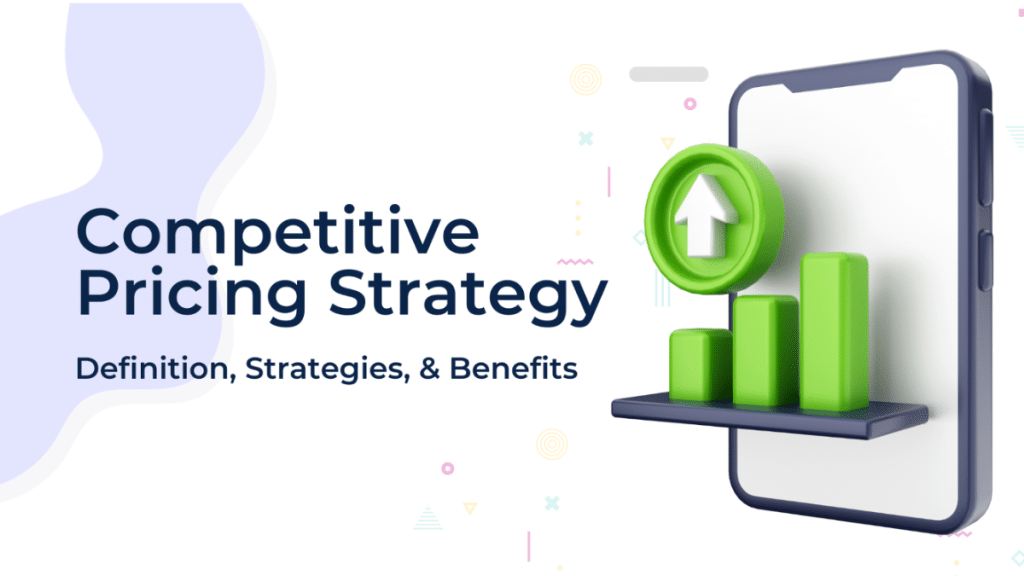Amazon vs. Walmart, McDonald’s vs Burger King, Uber vs Lyft – fierce rivalries like these aren’t just about product or service quality, they’re battles fought on the pricing front as well. These brands constantly adjust and optimize their prices to stay ahead of each other and the market. In other words, they have mastered the highly effective yet easy-to-implement competitive pricing strategy.
What is Competitive Pricing?
It is a pricing strategy where brands set the prices of their products or services relative to their competitors. Instead of basing prices solely on costs or other parameters, they use this approach to closely monitor market prices and adjust their own to remain attractive to consumers.
A competitive pricing strategy is not always about setting prices lower than your competitors. In fact, it can be classified into three types based on how you price your products or services wrt competitors:
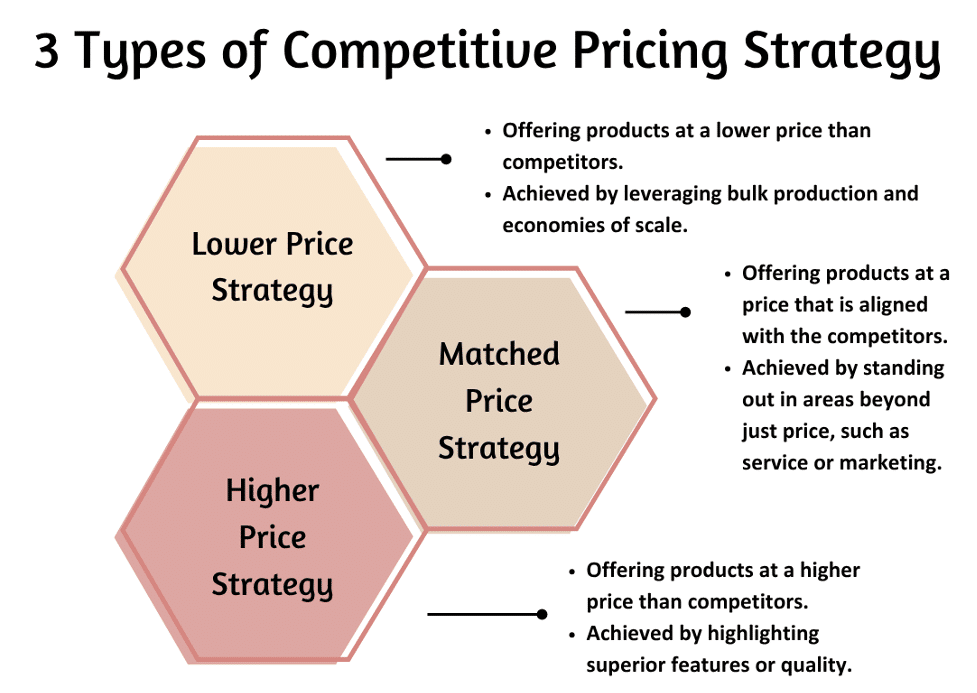
Benefits of Competitive Pricing
Here are some key benefits of competitive pricing:
- Attracts Price-Sensitive Customers: Competitive pricing appeals to customers who compare options before making a purchase. This helps you win over buyers who prioritize value for money.
- Grows Market Share: Offering equal or lower prices can encourage customers to switch from competitors. This helps you capture a larger portion of the market, especially if you have limited differentiation factors.
- Creates Customer Loyalty: When customers find value in your offering and also realize that your price is fair, they often end up sticking with your brand for a long time.
- Improves Market Position: Pricing smartly in relation to competitors allows you to position your brand strategically, whether as a budget-friendly alternative or a premium choice. This gives clarity to your customer base.
Smart Strategies to Master Competitive Pricing
Here are 7 different strategies you can follow while adopting this competition-based pricing approach:
#1 Analyze Price Elasticity
Analyze your historical sales data to understand how sensitive your customers are to price changes. Two outcomes are possible:
- High price elasticity: It means small changes in price significantly affect demand among your customers.
- Low price elasticity: It means your customers are less reactive to price shifts.
If customers are highly sensitive, a competitive pricing strategy is ideal for your business. Otherwise, you can adopt a premium or value-based pricing strategy.
#2 Segment Competitors
Pinpoint businesses that offer the same or similar products and serve the same target audience as you. It is also important to categorize them for better clarity and focus. Two common categories include:
- Direct competitors: Those who sell the same or nearly identical products to your own. These are your primary rivals in the market and should be your top priority when tracking pricing and promotional strategies.
- Indirect competitors: Brands that offer higher-end or more budget-friendly alternatives. While their products may differ in price or positioning, they still target the same customer base and can influence buyer decisions.
Apart from the above, you can also segment competitors in the following way –
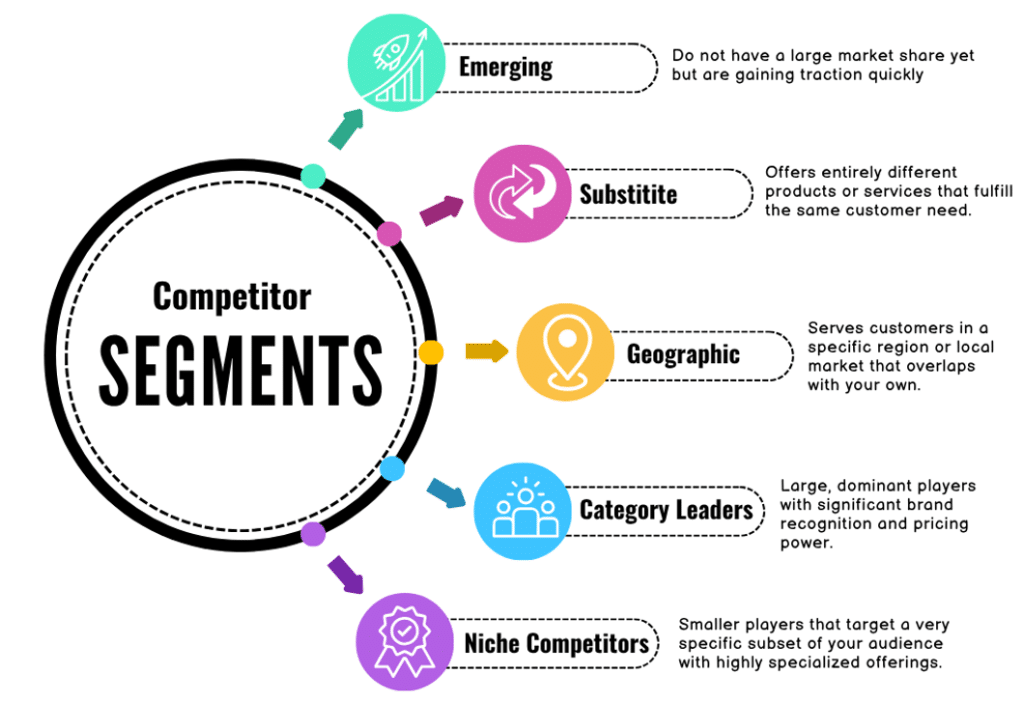
Segmenting your competitors allows you to focus your efforts on those who pose the most immediate threat to your market share. It also forms the basis of a data-driven pricing strategy, where detailed competitor analysis guides your decisions.
#3 Pay Attention to Market Conditions
Economic trends and industry shifts often influence how pricing decisions will play out. For instance, during periods of rising costs or potential economic downturns, a lower price strategy may hurt profitability. In such scenarios, undercutting competitors could do more harm than good if your business can’t absorb the impact.
Conversely, when the market is strong and consumer spending is high, it might be the ideal time to implement competitive pricing to boost sales volume. Undercutting competitors during periods of high demand can help you capture more customers and improve brand visibility.
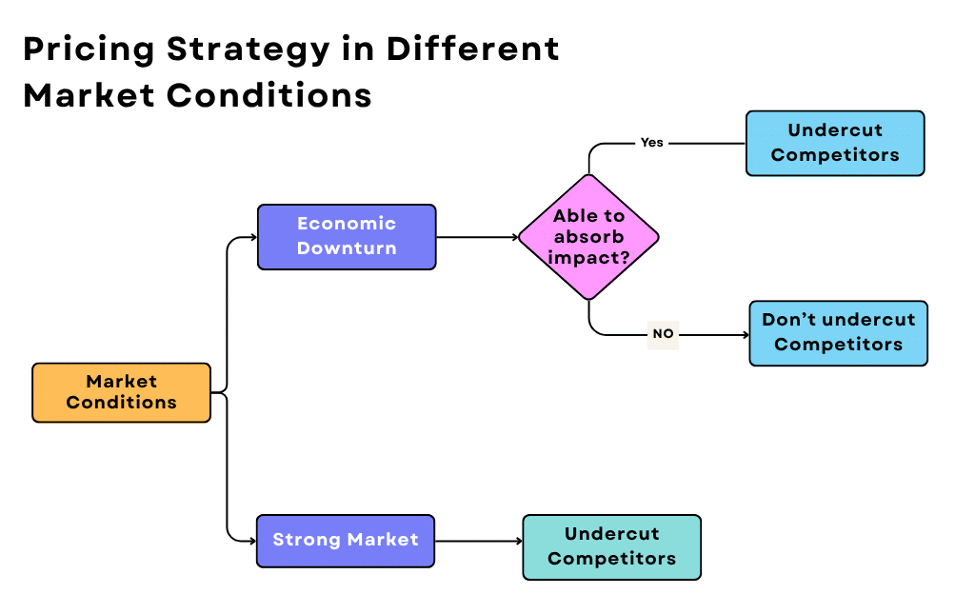
#4 Understand Customer Demands
Analyzing past customer demands can provide valuable insight into how your products are likely to perform at different price points. This helps you determine which items should be competitively priced and which shouldn’t.
For instance, if a product is experiencing high demand, it may not be wise to adopt a lower price strategy. In such cases, pricing it competitively might mean leaving money on the table. Instead, adopt a lower price strategy for less popular items to attract new customers. This way, you won’t compromise revenue from top-performing products.
Apple keeps pricing higher than Android phones for all its latest models because the demand is strong and customers are willing to pay for the brand value. However, it keeps older models in the market at lower price points, often comparable to Android phones.
#5 Align with Cost Structure
To ensure your pricing strategy is tenable, you also need a clear understanding of your cost structure. This includes supplier agreements, production and labor expenses, and marketing costs. Without a firm grip on these elements, lowering prices could harm profitability and jeopardize long-term growth.
Sometimes, competitive pricing may involve accepting tighter or even negative margins on select products to achieve larger strategic outcomes. The best example would be when you are entering a new market. In such cases, these short-term sacrifices must be backed by a well-defined plan that ensures long-term value creation.
#6 Set Regular Audit Dates
Once your competitive pricing strategy is in motion, establish regular audit dates. Schedule routine check-ins to review key metrics related to competitive pricing.
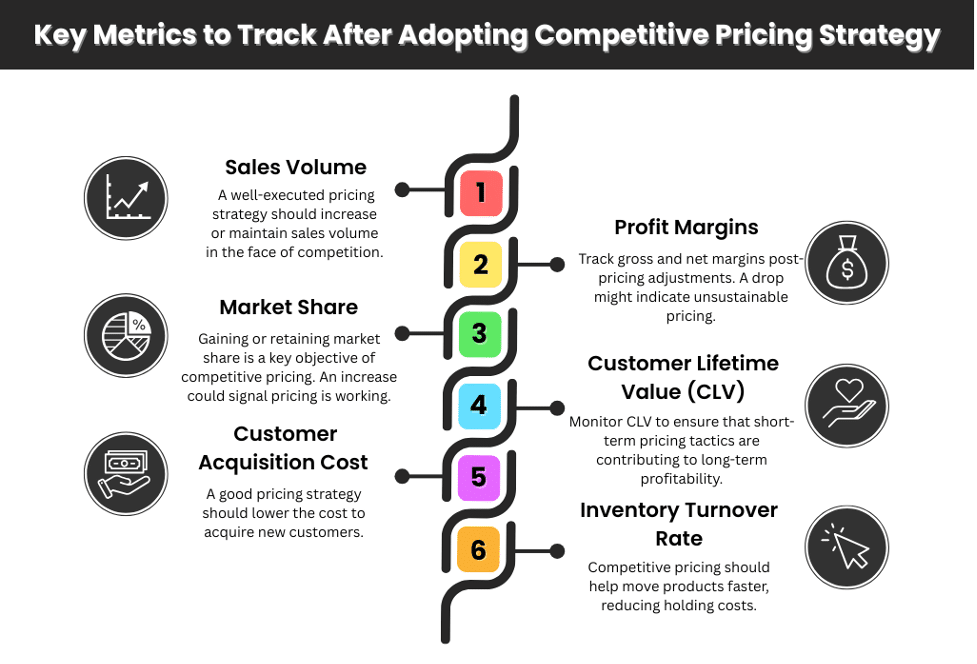
If you’re undercutting competitors but not seeing the expected boost in these metrics, it could be a sign that your pricing strategy needs to be refined.
Additionally, remember that pricing changes often trigger competitive reactions. Rivals may adjust their own pricing in response, potentially shifting the market dynamics. Regular audits help you stay on top of these changes.
#7 Pivot if Necessary
Even the most well-oiled pricing strategies need flexibility. If your ongoing analysis shows that your competitive pricing approach isn’t delivering the desired results, it’s time to reassess and pivot.
Being able to quickly adapt your pricing strategy in response to customer behavior or shifting market conditions is essential for staying ahead. Don’t hesitate to step back, re-evaluate your assumptions, and adjust your approach if needed.
Wrap Up
Competitive pricing might not be one of the most complex pricing strategies to implement. But its success is largely dependent on the right usage of competitor pricing data reflecting market dynamics and customer expectations. The strategies discussed in this post can be a good start for most businesses. As competition intensifies across industries, adopting a powerful pricing strategy like this can be the differentiating factor to thrive in the market.
